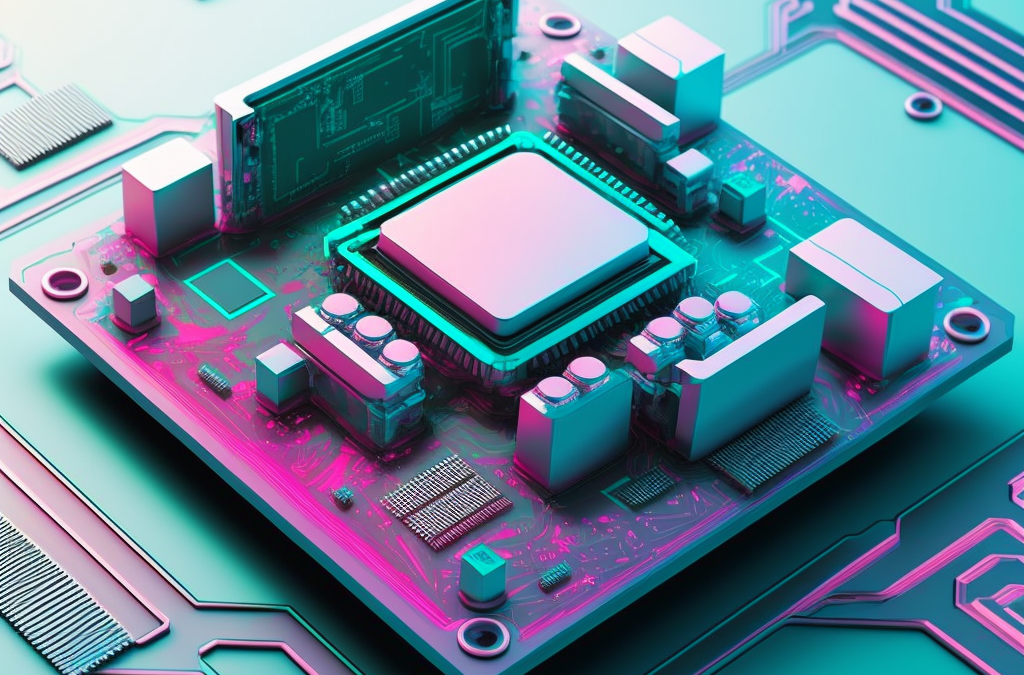
by Scott Bronstad | Apr 28, 2023 | How To
In-House Programming: Crucial Process in Electronic Device Manufacturing
Semiconductor device programming is a crucial process in the manufacturing of electronic devices. It involves the creation of firmware that runs the device and enables it to perform various functions. The firmware is essentially the software that is installed on the device’s microcontroller or microprocessor, and it contains the code that controls the device’s operation.
Device programming is important because it determines how the device will function and how it will interact with other devices and systems. The firmware must be programmed correctly to ensure that the device operates as intended, and any errors in the programming can result in malfunctions or even device failure.
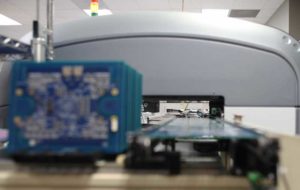
Circuit boards traveling down the SMT line at BPM Microsystems manufacturing facility in Houston Texas.
Why you should think about bringing device programming in-house
With the global supply chain becoming increasingly complex and vulnerable, many manufacturers are looking for ways to reduce their reliance on third-party providers. By bringing device programming in-house, manufacturers can have greater control over their supply chain and reduce the risk of delays or disruptions caused by external factors.
In-house programming facilities allow manufacturers to have complete control over the programming process, from design to testing and verification. This control can help manufacturers identify and resolve issues more quickly, reducing the risk of delays in the production process.
Additionally, by bringing semiconductor device programming in-house, manufacturers can reduce lead times and time-to-market. In-house programming facilities allow manufacturers to program devices on demand, reducing the need for large inventory stockpiles. This reduction in inventory can help manufacturers respond more quickly to changes in demand, ensuring that they can deliver products to market faster and with greater flexibility.
Challenges of In-House Device Programming
“I can’t afford to bring programming in-house”
For many years, outsourcing device programming has been the norm for most manufacturers. Outsourcing allows manufacturers to leverage the expertise of third-party providers with specialized equipment and personnel to perform programming services. Outsourcing can be a cost-effective option for small manufacturers who need to program only a few devices.
However, more manufacturers are now considering bringing semiconductor device programming in-house. In-house programming gives manufacturers more control over the programming process and allows them to tailor the programming to their specific needs. Additionally, in-house programming can be more cost-effective for larger manufacturers who need to program a large number of devices.
One way to overcome the challenges of in-house device programming is to use device programmers manufactured by BPM Microsystems. Their device programmers offer a range of benefits that can help manufacturers overcome the challenges of in-house programming.
BPM device programmers are designed to deliver consistent high-speed performance, accuracy, and speed, with on-the-fly alignment capabilities that guarantee fast, reliable programming. Additionally, their systems are designed to be easy to operate and maintain, maximizing uptime and productivity.
BPM programmers deliver return on investment in (usually) months, not years (see ROI article). One SMT manager described their BPM Automated Programming System (APS) as his “money printer.”
Outsourcing vs. In-House Programming
“I don’t have anyone with the technical expertise to run an in-house programmer”
In-house device programming offers numerous advantages, but manufacturers must also tackle certain challenges to establish a successful operation. Two primary concerns include costs and complexity. Establishing such an operation typically involves capital investment in specialized equipment and skilled personnel.
The programming setup process demands meticulousness and precision, as all input and output locations must be accurately “taught.” This can be a significant challenge even for experienced technicians, as an incorrect “teach” can result in wastage and failed operations.
BPM Microsystems: Transforming Challenges into Opportunities
For over three decades, BPM Microsystems has been a stalwart ally for manufacturers, helping them surmount these challenges and reap the benefits of in-house programming. Over the last three years, there has been a notable increase in smaller electronics manufacturers leveraging automated programmers, demonstrating the effectiveness of BPM’s solutions.
BPM Microsystems’ systems stand out for their efficiency and quick setup, thanks to their unique, patented WhisperTeach™ auto Z-teach technology. This innovation enables perfect setups in under 15 minutes, allowing you to start programming with the highest real-world throughput. Additionally, their universal site technology guarantees exceptional programming speeds with a single Generation of site technology, adeptly meeting your production demands.
When considering the Return on Investment (ROI), the value of BPM’s solutions becomes clear. While other systems require the expense of hiring and retaining a skilled technician, BPM Microsystems’ systems are designed for ease of use. They significantly reduce the need for specialist personnel, which translates to substantial cost savings over time. Although the initial investment in high-quality equipment might seem steep, the long-term benefits, including reduced labor costs and increased productivity, can offset these expenses.
BPM device programmers offer versatility and are upgrade-compatible with future device technology, ensuring your investment is future-proof. This access to cutting-edge programming capabilities, coupled with their award-winning support for systems, software, and sockets, delivers industry-leading assistance whenever needed. By choosing BPM Microsystems, manufacturers are not only overcoming the initial capital investment hurdle but also positioning themselves for considerable returns over time.
In conclusion, the robust design, ease of use, and upgrade compatibility of BPM’s device programmers provide a compelling solution for manufacturers looking to navigate the challenges of in-house device programming. Their investment in BPM Microsystems’ solutions not only safeguards their operations against future technological advancements but also promises a significant return on investment, making it a wise and profitable choice in the long run.

by Scott Bronstad | Feb 22, 2023 | How To, New Device Support, News, Technology
Unlocking Faster Turnaround Times
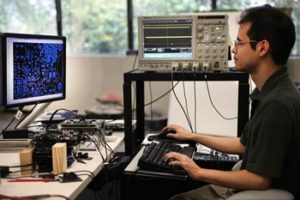 Device Support Engineers are crucial to the development of accurate and reliable programming support for programmable devices. Their role involves researching the device’s architecture, understanding its programming requirements, and developing algorithms to program the device. Here’s a closer look at the key responsibilities and skills required of DS engineers:
Device Support Engineers are crucial to the development of accurate and reliable programming support for programmable devices. Their role involves researching the device’s architecture, understanding its programming requirements, and developing algorithms to program the device. Here’s a closer look at the key responsibilities and skills required of DS engineers:
Responsibilities of DS Engineers
- Research device specifications: DS engineers must research and understand the specifications of the device to determine its programming requirements. They must analyze the device’s architecture and functionality to develop accurate and reliable support.
- Develop algorithms for programming devices: DS engineers use their knowledge of programming languages, scripting, and automation tools to develop algorithms for programming semiconductor devices. They write code optimized for performance and accuracy based on the device’s architecture and functionality.
- Collaborate with other teams: DS engineers work closely with hardware and software engineers to troubleshoot issues and ensure that the device functions correctly. They collaborate to ensure that the device meets performance specifications.
Skills Required of DS Engineers
- Programming proficiency: DS engineers must be proficient in programming languages such as C, C++, Python, etc. They must be familiar with scripting and automation tools to optimize the programming process.
- Analytical and problem-solving skills: DS engineers must have strong analytical and problem-solving skills to identify the root cause of issues that arise during the programming process. They must be able to develop solutions to fix problems (“bugs”) quickly.
- Communication and collaboration skills: DS engineers must have excellent communication and collaboration skills to work effectively with other teams. They must be able to communicate complex technical information effectively and work collaboratively to ensure the device functions correctly.
Investing in DS Engineers
Companies that invest in developing their device support engineers can develop accurate and reliable support faster and more efficiently, leading to a competitive advantage. With new devices and technologies constantly emerging, DS engineers must continuously stay up-to-date with the latest programming languages, tools, and hardware platforms to adapt quickly to new development environments and technologies.
BPM has invested heavily in developing its DS engineer teams, doubling resources over the last 2 years. Becoming proficient in this role can take months of on-the-job training, working with other more experienced engineers. BPM’s investment is working: development times for average complexity projects have dropped from 10 or more weeks to an average of 2 to 4 weeks!
Conclusion
Device support engineers play a critical role in developing accurate and reliable support for programmable devices. They must have a deep understanding of the device’s architecture and functionality, as well as proficiency in programming languages, analytical and problem-solving skills, and communication and collaboration skills. Companies that invest in developing their DS engineers can develop accurate and reliable support faster and more efficiently, leading to a competitive advantage in the market.
Mastering eMMC Device Programming | White Paper: Semiconductor Device programming | Production-Level Support from BPM Microsystems | Apply for BPM Software Engineer
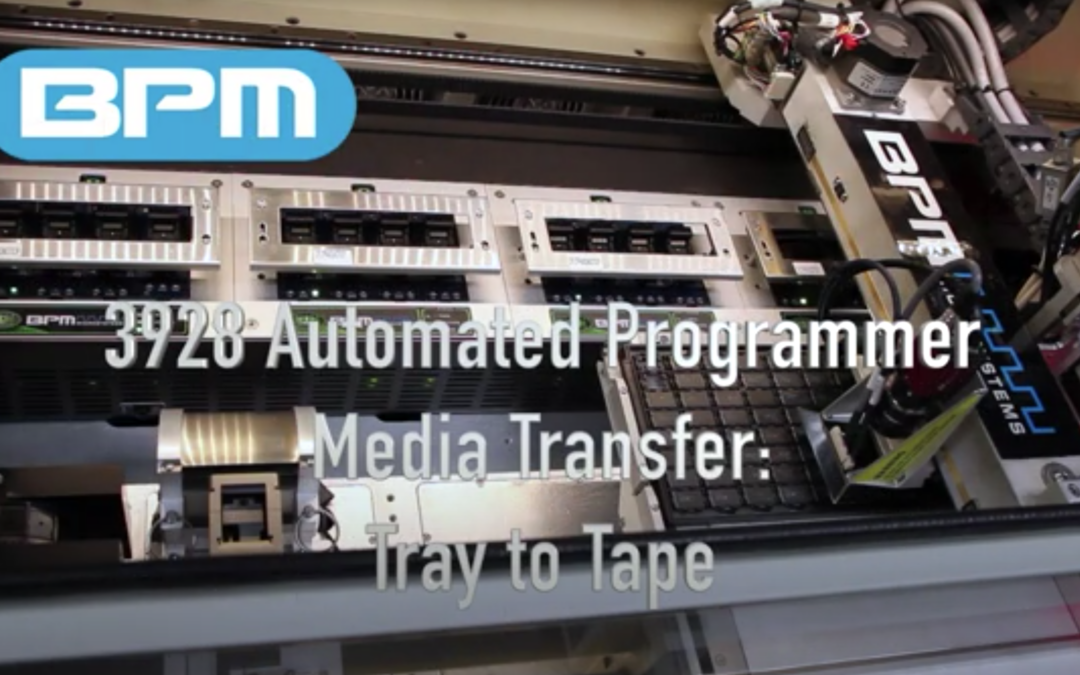
by Scott Bronstad | Feb 20, 2023 | How To, Video
How Automated Device Programmers Make Media Transfer Effortless
Automated device programmers are changing the way we work with semiconductor devices. These machines are versatile, efficient, and highly accurate, making them an essential tool in the manufacturing and maintenance of electronic devices.
One of the primary uses of automated device programmers is to program semiconductor devices such as microcontrollers and memory chips. The process of programming devices with automated device programmers is quick, accurate, and reliable, making it the preferred method for many manufacturers and technicians.
In addition to programming devices, automated device programmers can also be used for transferring devices between different media formats. In the manufacturing process of electronic devices, components are often supplied in tubes or trays and need to be transferred to tape media for use in the production line. Automated device programmers can perform this task quickly and efficiently, making the process seamless.
Similarly, in the maintenance of electronic devices, components may need to be transferred from tape media into trays for testing or repair. Automated device programmers can transfer components between different media formats with ease, ensuring accuracy and efficiency.
Automated device programmers are designed to be user-friendly, making them accessible to people with little technical knowledge. They are also highly reliable, detecting and correcting errors during the programming and transferring process.
In conclusion, automated device programmers have revolutionized the way we work with semiconductor devices. They are versatile machines that can be used for both programming and transferring devices between different media formats. Their accuracy, efficiency, and reliability make them essential tools in the semiconductor industry.

by Scott Bronstad | Jan 26, 2023 | Cybersecurity, How To, Technology
Cybersecurity is a critical concern to secure data for offline device programming, as it ensures the integrity and confidentiality of the programming process. Below are several ways to implement cybersecurity in device programming, with tips on what you should be doing today, including access control, encryption, software updates, risk assessment/management, audits, and education.
Access control
Implementing strict access controls can prevent unauthorized access to the programming equipment and software. This can include physical security measures to secure data, such as security cameras and access cards, as well as software-based security measures, such as password protection and multi-factor authentication.
- Use security cameras to monitor access to the programming equipment and software.
- Use access cards or biometric authentication to control access to the programming equipment and software.
- Implement software-based security measures, such as password protection and multi-factor authentication.
- Regularly review and update access controls to ensure they are still effective.
- If possible, remove outside access to networks and the internet. No access makes it almost impossible to hack.
- Deeper dive here
Secure Data with Encryption
 Encrypting the programming data and communication between the programming equipment and software can secure data against data breaches and unauthorized access to the programming data.
Encrypting the programming data and communication between the programming equipment and software can secure data against data breaches and unauthorized access to the programming data.
- Use strong encryption algorithms to protect the programming data.
- Implement key management to ensure that only authorized personnel have access to the encryption keys.
- Regularly review and update encryption methods to ensure they are still effective.
- 9 best encryption software programs for 2023
Secure software updates
Regularly updating the programming equipment and software is important for keeping them secure. However, it’s important to ensure that these updates are coming from a trusted source and are properly authenticated before installation.
- Ensure that updates are coming from a trusted source and are properly authenticated before installation.
- Keep track of software version and updates history.
- Verify the authenticity of software updates and the update process.
Risk assessment and management
Conducting regular risk assessments and implementing a risk management plan can help identify and mitigate potential vulnerabilities in the programming process.
- Implement a risk management plan to mitigate identified vulnerabilities.
- Evaluate the effectiveness of the risk management plan and update it as needed.
- Deeper dive here
Regular security audits
Regularly auditing the programming process and equipment can help identify and address any security weaknesses. Treat cyber threats as you would an ISO audit.
- Use both automated and manual testing methods.
- Use third-party security experts to conduct regular security audits.
- Keep records of security audits and implement recommendations.
Employee education and awareness
Educating employees about the importance of cybersecurity and how to properly handle and protect programming equipment and data can help prevent human error-based security breaches.
- Provide regular cybersecurity training to employees.
- Create and implement security guidelines and policies.
- Encourage employees to report any suspicious activities or security breaches.
- Run regular cybersecurity drills and simulations.
Implementing these security measures can help ensure the integrity and confidentiality of the offline semiconductor device programming process and protect against potential cyber threats. While this article focuses on offline programming, many of these principles apply to other types of device programming as well. In short, it’s important to regularly review and update these security measures to ensure they stay effective in protecting against evolving cyber threats.
Learn More
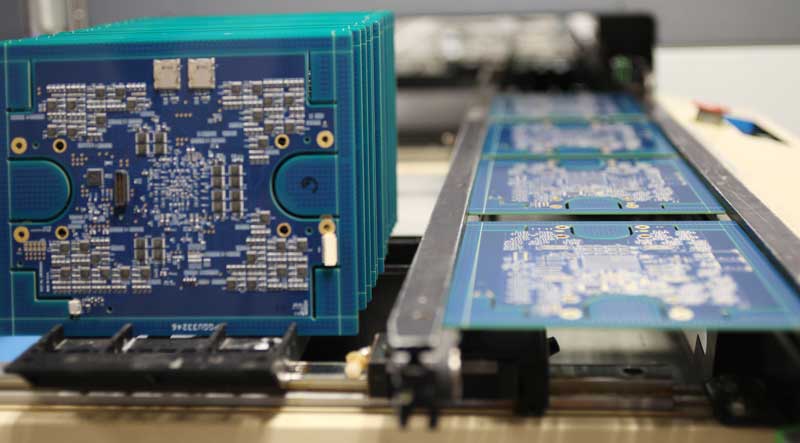
by Scott Bronstad | Jan 24, 2023 | How To, Technology
Which is best for your application?
Programming semiconductor devices is a crucial step in ensuring their proper functioning in electronic devices. There are several methods available for programming these devices, each with its own advantages and disadvantages. In this article, we will discuss three popular methods: in-system programming (ISP), offline programming, and Inline SMT Programming.
ISP Device Programming
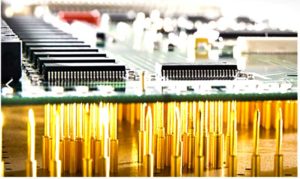
Bed-of-Nails fixture connects the PCB to the final test
In-system programming (ISP) is a method that involves programming the device while it is still in the final application or system. This can be done by connecting the device to a computer or other programming device through a specialized interface, such as a JTAG or SPI interface. ISP is a more cost-effective option for high-volume production as it eliminates the need for a separate device programmer. However, it can be more complex and time-consuming to set up and use. IPS programming is more difficult to scale production. As volumes and/or programming memories increase, the line may turn into a bottleneck.
Off-Line Device Programming
The most common method for programming semiconductor devices is “offline.” This method involves the use of a specialized piece of equipment called a device programmer that is used to transfer data or code to the device. The programmer or development kit connects to the device either directly or by a socket and writes the code or data to the memory of the device. This method is relatively simple and straightforward, but may not be suitable for high-volume production.
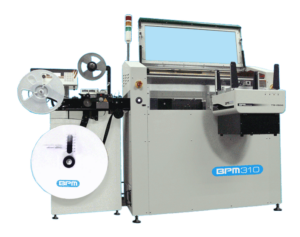 To overcome the limitations of manual device programming, automated device programming systems can be used for high-volume production. These systems typically include multiple device programmers that are integrated into a single robotic platform, which can be controlled by a computer and a central controller. Automated device programming systems can significantly increase the efficiency and speed of programming semiconductor devices. They can also improve the accuracy and consistency of the programming process by automating repetitive tasks. Additionally, automated systems can be equipped with advanced features such as data logging, monitoring, and testing to ensure the quality of the programming process. Marking and media transfer are also possible.
To overcome the limitations of manual device programming, automated device programming systems can be used for high-volume production. These systems typically include multiple device programmers that are integrated into a single robotic platform, which can be controlled by a computer and a central controller. Automated device programming systems can significantly increase the efficiency and speed of programming semiconductor devices. They can also improve the accuracy and consistency of the programming process by automating repetitive tasks. Additionally, automated systems can be equipped with advanced features such as data logging, monitoring, and testing to ensure the quality of the programming process. Marking and media transfer are also possible.
A gang programmer has multiple sockets to program multiple devices at once. It can program a wide range of devices, from small microcontrollers to high-density flash memories. This makes it a versatile option for high-mix production environments where different types of devices need to be programmed.
Inline SMT Programming
Yet another method for programming semiconductor devices is through the use of Inline SMT Programming method. The process involves programming the devices during the Surface Mount Technology (SMT) assembly process. This method is suitable for high-volume production as it allows for the simultaneous programming and assembly of the devices. It is also cost-effective as it eliminates the need for a separate device programmer or ISP process. However, it requires specialized equipment and knowledge to execute properly; in addition, changes to existing workflows are expensive, time-consuming, and require testing to ensure everything is working correctly, delaying production until everything is checked and ready.
Which Method is Best?
There are several methods available for programming semiconductor devices, each with its own advantages and disadvantages. ISP is a cost-effective option for high-volume production but can be complex to set up and use. Off-line manual device programming is straightforward and easy to use but is not a good candidate for high-volume production. Automated device programming systems can significantly increase the efficiency and speed of programming semiconductor devices, improve the accuracy and consistency of the programming process and ensure the quality of the programming process. Inline SMT Programming is a cost-effective option for high-volume production with no changes to the boards, eliminates the need for a separate device programmer or ISP process, but requires specialized equipment and knowledge. The choice of method will depend on the specific requirements of the application and the resources available.
Learn more:
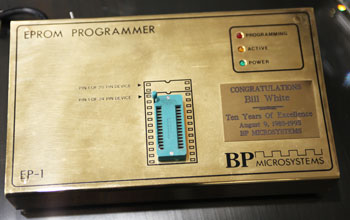
by Scott Bronstad | Jan 13, 2023 | How To
Semiconductor devices are an integral part of modern electronics, powering everything from smartphones to computers to automobiles. These tiny devices are at the heart of all electronic circuits, providing the necessary computing power to perform a wide range of tasks.
However, in order for these devices to function properly, they must be properly programmed. This process can seem daunting for those new to the field, but with the right knowledge and tools, anyone can learn to program semiconductor devices.
Start with the End
Choosing the right chip for a project can be challenging, especially when supply chain constraints are taken into consideration. Here are a few things to consider when making this decision:
- Availability: It is important to consider the availability of the chip in the market. If a chip is in high demand and has a limited supply, it may be difficult to obtain and may have longer lead times. This can be a major constraint in the design process, as it can delay the development of the product or raise the cost.
- Cost: The cost of the chip is also an important factor to consider, especially when working within a budget. Some chips may be more expensive than others, which can affect the overall cost of the product.
- Technical specifications: The technical specifications of the chip, such as its processing power, memory capacity, and communication interfaces, must be taken into account to ensure that it meets the requirements of the project.
- Manufacturers: It is important to consider the reliability and reputation of the chip manufacturers. A reputable manufacturer is more likely to provide consistent quality and support for the chip.
- Second source: It is always good to have a second source for the chip. This will ensure that the project is not affected by the lack of availability of the chip from a single supplier.
- Alternatives: It is important to research and consider alternative chips that may be able to meet the requirements of the project. Sometimes a newer or less well-known chip may offer similar or better performance at a lower cost or with less lead time.
- Support: Is the device supported by the programmer you’ll be using? If the goal is scaling to production levels, don’t choose a development board, but something that can scale up to production levels.
- Obsolescence: It’s important to consider the obsolescence of the chip, i.e. the length of time that the chip will be manufactured and available in the market.
By considering these factors and researching different options, it is possible to choose a chip that meets the requirements of the project and is also available and affordable within the constraints of the supply chain.
First Steps
The first step in programming a semiconductor device is to determine the type of device you are working with. There are many different types of semiconductor devices, including microprocessors, microcontrollers, and memory chips. Each of these types of devices has its own unique set of programming requirements, so it is important to understand the differences between them.
Understanding the type of semiconductor device you are working with is crucial in order to properly program it. Different types of devices have different capabilities, resources, and programming requirements.
Microprocessors are devices that are capable of performing complex arithmetic and logic operations. They are the “brain” of a computer and are used in devices such as personal computers, laptops, and servers. They are typically programmed using high-level programming languages such as C or C++ and require specialized software development tools such as compilers, debuggers, and integrated development environments (IDEs).
Microcontrollers, on the other hand, are smaller, less powerful devices that are often used in embedded systems, such as appliances, automobiles, and industrial control systems. They are typically programmed using low-level languages such as assembly or C and require specialized development tools such as debuggers and in-circuit emulators (ICEs).
Memory chips, such as flash memory, are used for storing data in electronic devices. They are typically programmed using specialized software development tools such as flash programmers.
It is important to understand the differences between these types of devices, as the programming requirements and tools for each type of device may vary. For example, programming a microprocessor will be different than programming a microcontroller, and also programming a flash memory chip will be different than programming a microcontroller.
It is also important to consult the device’s documentation and consult the manufacturer’s website for specific programming requirements and guidelines. This will ensure that you have the correct tools and knowledge to program the device correctly and efficiently.
Programming Tools
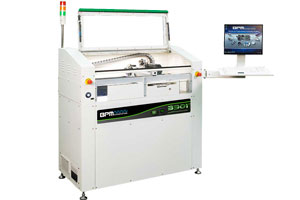 Once you have determined the type of device you are working with, the next step is to gather the necessary tools. These may include a computer with the appropriate software and hardware, such as a programmer or debug board. You will also need a set of development tools, such as a compiler or debugger, to help you write and test your code.
Once you have determined the type of device you are working with, the next step is to gather the necessary tools. These may include a computer with the appropriate software and hardware, such as a programmer or debug board. You will also need a set of development tools, such as a compiler or debugger, to help you write and test your code.
The tool should be chosen with scalability in mind. If you’re programming chips for just a handful of installations, your options are plentiful. But if your plan requires thousands or millions of programmed parts, choose a device programmer that can scale to your needs. Often developers start with a manual programmer where the operator inserts the devices by hand. When quantities go above 50,000 per year, an automated programming system is a must. Automated systems also give you additional options, such as media transfer, marking, and inspection.
Programming Code Languages
Next, you will need to learn the programming language that is used to write code for the specific device you are working with. This may be a proprietary language specific to the device manufacturer, or it may be a more widely used language such as C or C++. It is important to become familiar with the syntax and structure of the language, as well as any libraries or functions specific to the device.
Once you have gathered the necessary tools and learning the programming language, the next step is to write and test your code. This process involves writing code that performs the desired functions, such as controlling a device or processing data. It is important to test your code thoroughly to ensure that it is functioning correctly and free of errors.
Finally, once you have written and tested your code, you can program the device by uploading it to the device using the appropriate programming tools. This process may involve connecting the device to a computer or using a specialized programming board.
Programming semiconductor devices can seem intimidating for those new to the field, but with the right knowledge and tools, anyone can learn to program these important devices. By following these steps and practicing regularly, you can quickly become proficient in semiconductor device programming and begin building your own electronic circuits and devices.
Learn More
There are many resources available for learning about programming semiconductor devices, including books, online tutorials, and educational courses. Some popular sources for learning about semiconductor device programming include:
Additionally, many universities and colleges offer courses on semiconductor device programming, which can be a great way to gain a deeper understanding of the subject.
Best Private Universities
- Massachusetts Institute of Technology (MIT): Located in Cambridge, Massachusetts, MIT is consistently ranked as one of the top universities in the world for science, technology, engineering, and mathematics (STEM) fields.
- Stanford University: Located in Stanford, California, Stanford is known for its strong programs in business, engineering, and computer science.
- Harvard University: Located in Cambridge, Massachusetts, Harvard is one of the oldest and most prestigious universities in the country, and it offers a wide range of undergraduate and graduate programs in a variety of fields.
- California Institute of Technology (Caltech): located in Pasadena, California, Caltech is a small, private research university known for its strong programs in science and engineering.
- Princeton University: located in Princeton, New Jersey, Princeton is one of the oldest universities in the country and is known for its undergraduate liberal arts program and graduate programs in a variety of fields, including engineering and the sciences.
- University of Chicago: located in Chicago, Illinois, UChicago is known for its strong programs in economics, business, law, and the sciences.
Best Public Universities
There are many excellent public universities in the United States that offer high-quality education at an affordable cost. Here are a few examples of highly-ranked public universities in the US:

 Device Support Engineers are crucial to the development of accurate and reliable programming support for programmable devices. Their role involves researching the device’s architecture, understanding its programming requirements, and developing algorithms to program the device. Here’s a closer look at the key responsibilities and skills required of DS engineers:
Device Support Engineers are crucial to the development of accurate and reliable programming support for programmable devices. Their role involves researching the device’s architecture, understanding its programming requirements, and developing algorithms to program the device. Here’s a closer look at the key responsibilities and skills required of DS engineers:



 To overcome the limitations of manual device programming, automated device programming systems can be used for high-volume production. These systems typically include multiple device programmers that are integrated into a single robotic platform, which can be controlled by a computer and a central controller. Automated device programming systems can significantly increase the efficiency and speed of programming semiconductor devices. They can also improve the accuracy and consistency of the programming process by automating repetitive tasks. Additionally, automated systems can be equipped with advanced features such as data logging, monitoring, and testing to ensure the quality of the programming process. Marking and media transfer are also possible.
To overcome the limitations of manual device programming, automated device programming systems can be used for high-volume production. These systems typically include multiple device programmers that are integrated into a single robotic platform, which can be controlled by a computer and a central controller. Automated device programming systems can significantly increase the efficiency and speed of programming semiconductor devices. They can also improve the accuracy and consistency of the programming process by automating repetitive tasks. Additionally, automated systems can be equipped with advanced features such as data logging, monitoring, and testing to ensure the quality of the programming process. Marking and media transfer are also possible.
 Once you have determined the type of device you are working with, the next step is to gather the necessary tools. These may include a computer with the appropriate software and hardware, such as a programmer or debug board. You will also need a set of development tools, such as a compiler or debugger, to help you write and test your code.
Once you have determined the type of device you are working with, the next step is to gather the necessary tools. These may include a computer with the appropriate software and hardware, such as a programmer or debug board. You will also need a set of development tools, such as a compiler or debugger, to help you write and test your code.